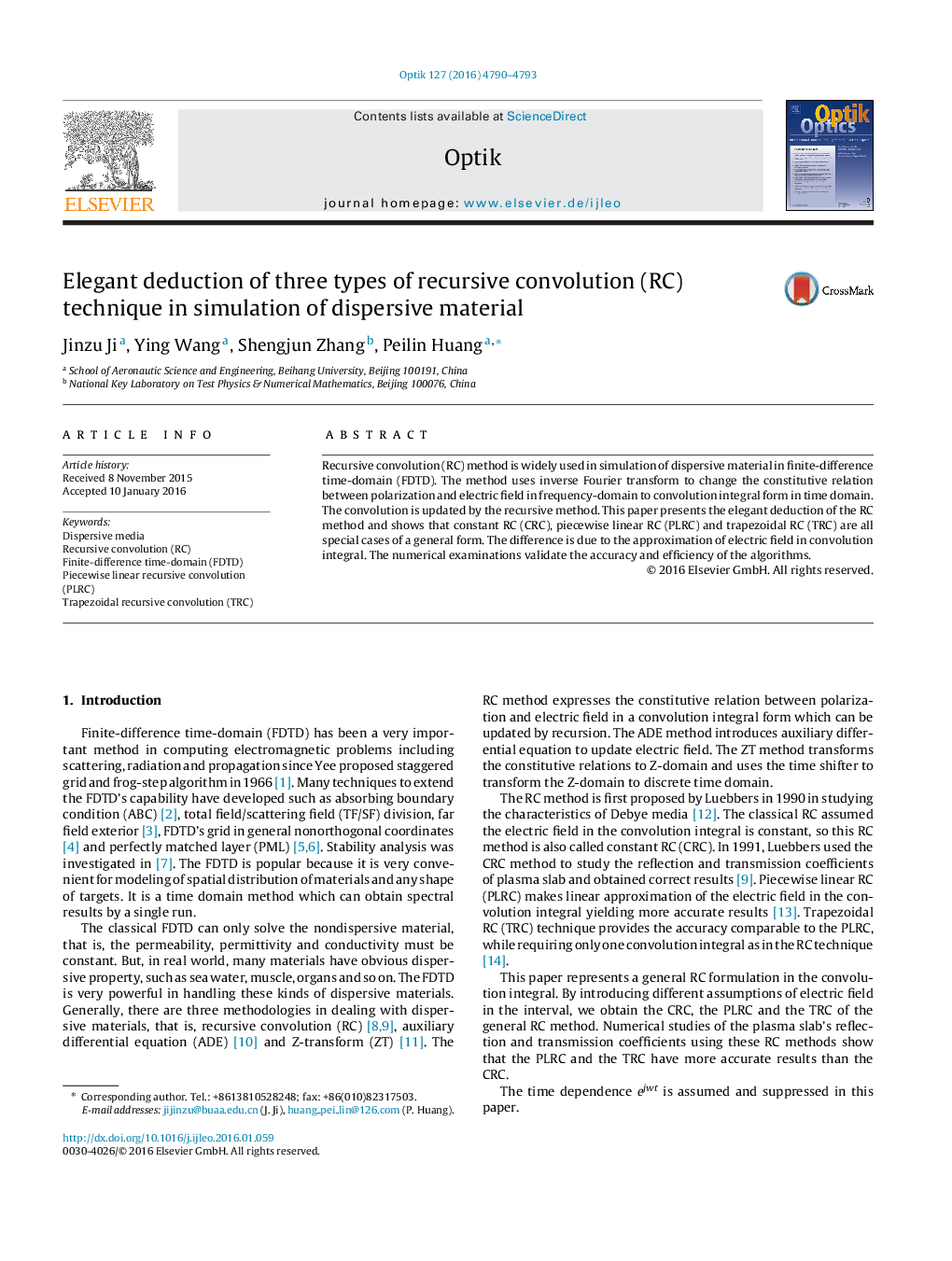| Article ID | Journal | Published Year | Pages | File Type |
|---|---|---|---|---|
| 847488 | Optik - International Journal for Light and Electron Optics | 2016 | 4 Pages |
Abstract
Recursive convolution (RC) method is widely used in simulation of dispersive material in finite-difference time-domain (FDTD). The method uses inverse Fourier transform to change the constitutive relation between polarization and electric field in frequency-domain to convolution integral form in time domain. The convolution is updated by the recursive method. This paper presents the elegant deduction of the RC method and shows that constant RC (CRC), piecewise linear RC (PLRC) and trapezoidal RC (TRC) are all special cases of a general form. The difference is due to the approximation of electric field in convolution integral. The numerical examinations validate the accuracy and efficiency of the algorithms.
Related Topics
Physical Sciences and Engineering
Engineering
Engineering (General)
Authors
Jinzu Ji, Ying Wang, Shengjun Zhang, Peilin Huang,
